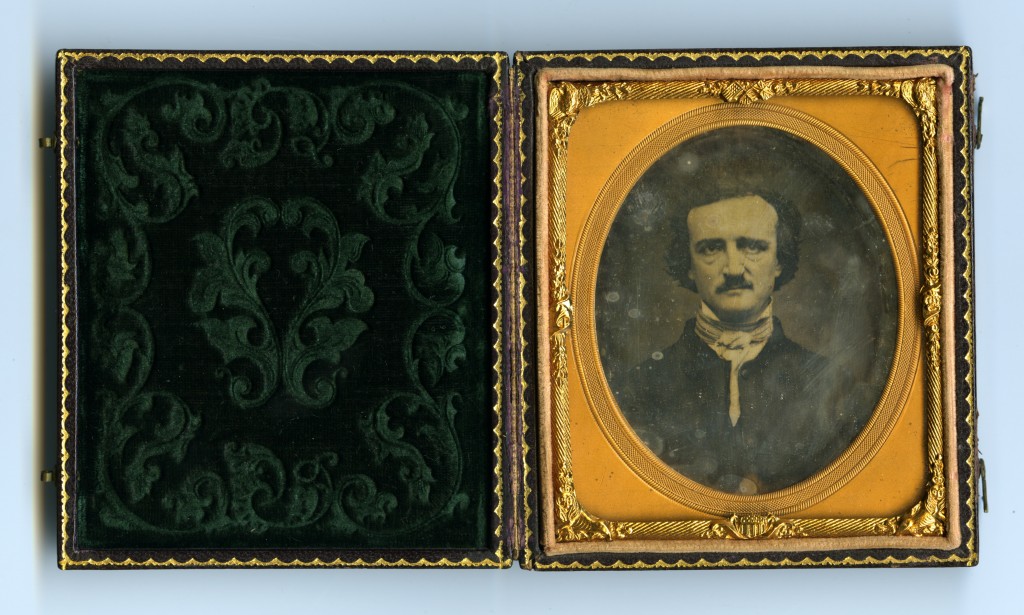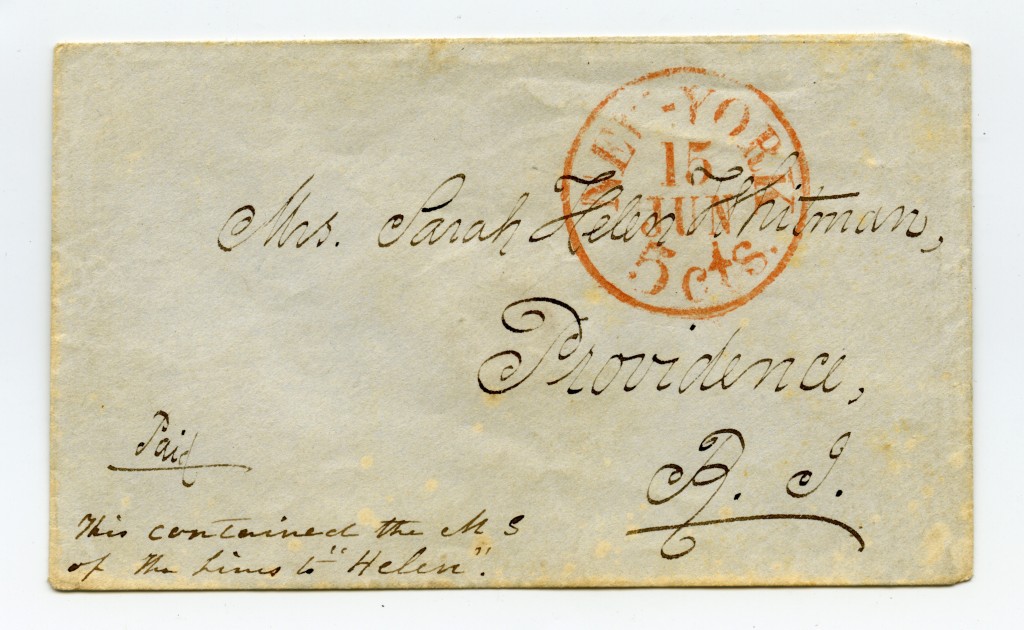Recently my high-school-aged daughter was working on a final paper for her English class. She was writing about Edgar Allan Poe, comparing the vault setting of “The Cask of Amontillado” with the quiet library used in the poem “The Raven.” She asked me to proofread her paper and to check her bibliography (I was a bibliographer in a former life and she knows the limits of EndNote). As I read through looking for typos and extra commas, I casually mentioned that she might find it of interest that AAS holds copies of the first printings of both of these Poe works. “The Raven” appeared under a pseudonym in The American Review in January of 1845. It was published shortly after under Poe’s own name in the Evening Mirror newspaper where it was picked up and reprinted by numerous papers across the country. “The Cask of Amontillado” was first published in the November 1846 issue of Godey’s Lady’s Book which had a national circulation.
My daughter was unimpressed. She asked if the copies we had were Poe’s own copies. No, I replied, they were collected by the Society but they were never owned by Poe. I countered with the fact that AAS also holds many early printings of Poe’s books, including his book on shells (The Conchologist’s First Book, 1839), and a first edition of The Raven. Again, she was not that interested since these volumes were never owned by Poe himself. I had to pull out my trump card. “Well,” I said, “We also have a daguerreotype of Poe that he sent to a friend. We even have the envelope he used to send it.” That did it – immediately we went to the computer to see the photo and the envelope. Because Poe had touched this object it had resonance for a teenager interested in the author’s work. “Cool,” she said, “That is pretty cool.”
Getting high school readers interested in American literature is a challenge. I am lucky my child had a teacher who mixed up the classics with contemporary writing. This week there was a piece on our local NPR station about the “dumbing down” of summer reading lists and classroom assignments where high schoolers are reading books intended for fifth-graders (http://www.wbur.org/npr/190669029/what-kids-are-reading-in-school-and-out).
While AAS does not generally serve a high school population in our reading room, we do offer considerable programming for K-12 teachers. We hear a lot from the participating teachers about the challenges of connecting students with historical material. The language is tough, the dense writing style can be impenetrable, themes feel disconnected from today’s realities. It takes a determined educator to venture down a path lined with writings by Melville and Wharton or Dickinson and Emerson. As the distance seems to grow ever greater between Poe and his work and today’s fourteen- and fifteen-year-olds, I am glad that we had a teacher who challenged his students, and I am glad that AAS had preserved a photograph and an envelope – objects which electrify the brain and visually relate to the man who captured the very basic idea of fear and uncertainty when he wrote:
And the silken sad uncertain rustling of each purple curtain
Thrilled me – filled me with fantastic terrors never felt before;
So that now, to still the beating of my heart, I stood repeating
“‘Tis some visitor entreating entrance at my chamber door –
Some late visitor entreating entrance at my chamber door; –
This it is, and nothing more.”



It’s sad that modern teens aren’t challenged. When I was 14 it was the American Bicentennial year, and books like Roots, Jane Eyre and Dickens had me asking questions about my family history (my family was from Yorkshire, England and Lexington, MA). I took a night class in genealogy, and one of the field trips was to AAS. I wanted to return to do research on my own, and it was within bicycle distance of where I was living in Holden. However, I needed special permission to use the reading room back then, since I was underage. And genealogy was looked down on as a research objective in those days, so I had a teacher write a letter that I was doing research for “an independent study”. Do you still have restrictions on age and research purpose for teeneagers at AAS?
I am glad you came in as a high schooler! We do still ask that high school students have a letter from their teachers explaining their project. We have one local teacher who brings his entire class in each fall and works with them on individual projects that last a semester. We have had a couple of independent students in this past year, one working on genealogy and one using the historic newspaper collection.
Great story. I wish more students were interested in history and great literature.